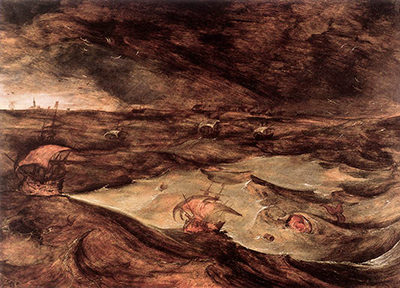The Renaissance and Baroque periods are famous for many things, one of which is the difficulty experienced by art historians in their attempts to confidently attribute artist's work
As shown in programmes such as Fake or Fortune? from the BBC in the UK, there seems no end to this discussion and research around artist's work - even for some as far back as the 14th-16th centuries. With so many fraudulent copies and unscrupulous individuals in the art scene, the only option for true confidence has been the use of modern scientific techniques.
The more recent art by the likes of the French impressionists of the 19th century has proven somewhat easier to collate, thanks to the amount of supporting documentation that still exists. Items such as exhibition catalogues, personal diaries and also a clear crossover between the lives of many famous artists have proven invaluable.
The earlier art movements, such as the Northern Renaissance and Dutch Golden Age were complicated by the large number of supporting artists who the famous names employed, and trained, within their own studios. Styles would then start to become very similar, leaving some paintings linked to both an artist and also members of his studio. It can be almost impossible to differentiate the two in some circumstances.
Some artists have even had a family connection with other artists, sometimes blurring the lines between the work of both. There were multiple Bellinis, Carraccis and Van Eycks plus of course Pieter Bruegel the Younger, his son, plus the Jan Bruegels of two generations.
The Storm at Sea
This seascape featured as the main image in this page is known as The Storm at Sea and has been attributed by some to Pieter Bruegel the Elder. There has been sufficient supporting evidence to include it within this section, but its connection to Bruegel remains highly disputed.
Many had believed that Joos de Momper was in fact the artist responsible for The Storm at Sea from 1569 but there are several pieces of information that now make Bruegel the most likely creator. Firstly, the quality of the painting appears superior to anything that he is known to have produced, plus there is a clear similarity to a drawing completed by Bruegel with pen and brown ink in Antwerp at around that time.
Whoever it's creator, The Storm at Sea can be found at the Kunsthistorisches Museum in Vienna.
Yawning Man
This expressive portrait was produced as a means to study the facial contortions of a peasant. Most now attribute it to Bruegel the Younger, having for many years been labelled as one of his father's works. It is unusual to see a study piece produced in oils rather than a simpler medium such as pen or ink.
The artist did not have quite the same natural ability or imagination as his father and would needed greater practice in his career in order to get anywhere near the quality of The Elder. Of late, many have attempted to distance Pieter Bruegel the Elder's career from the rest of his family because they believe he was so superior.




